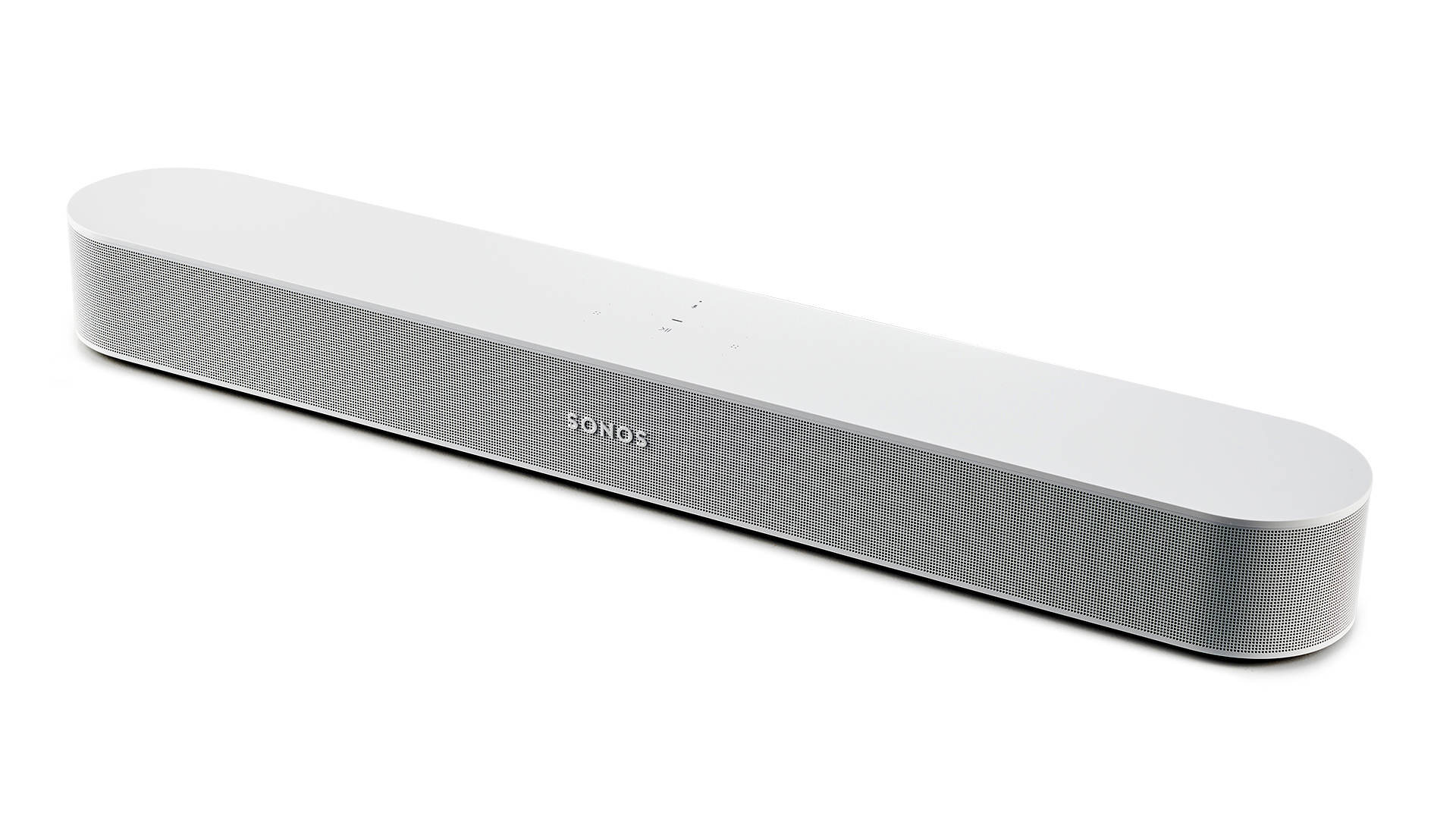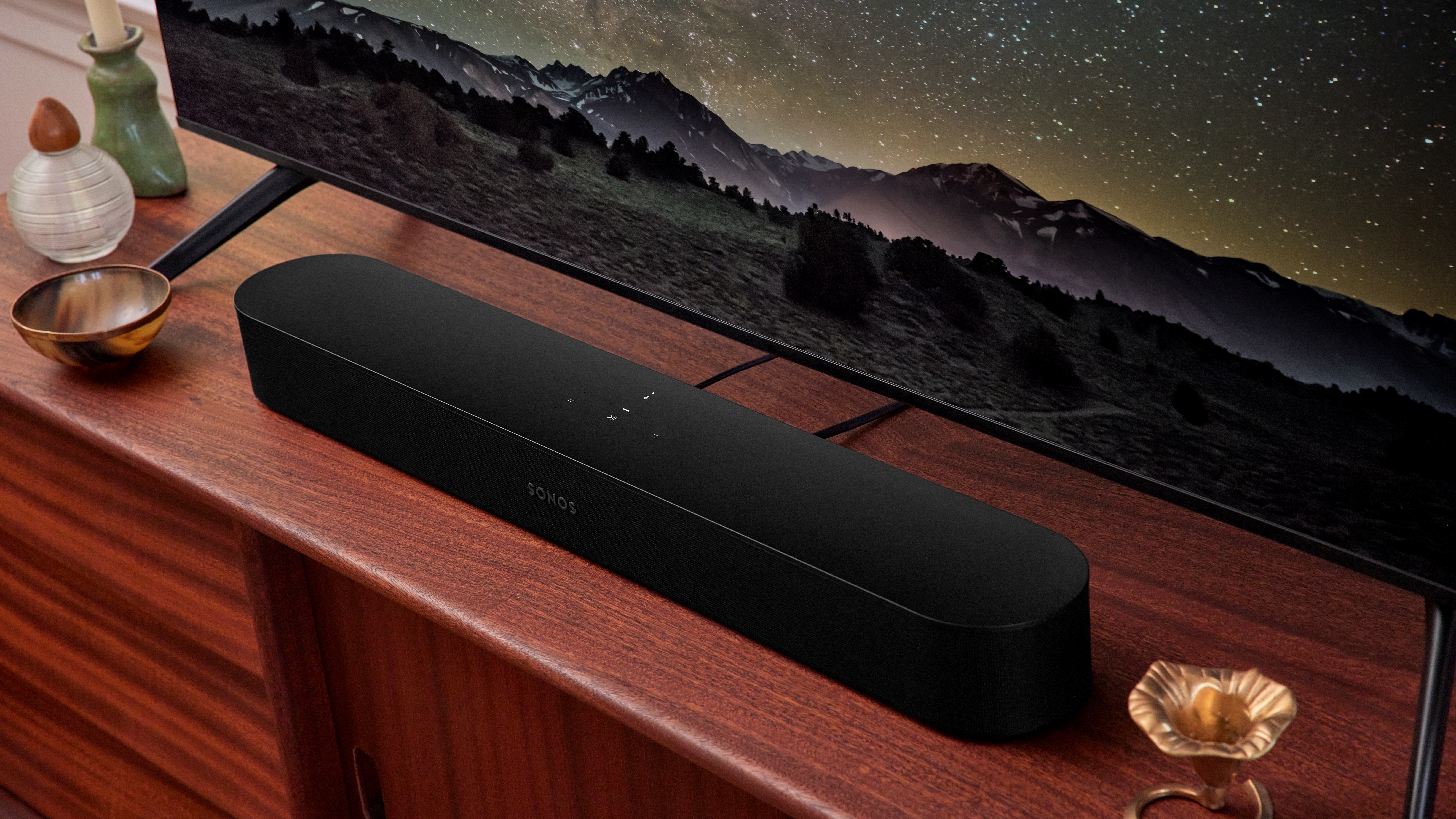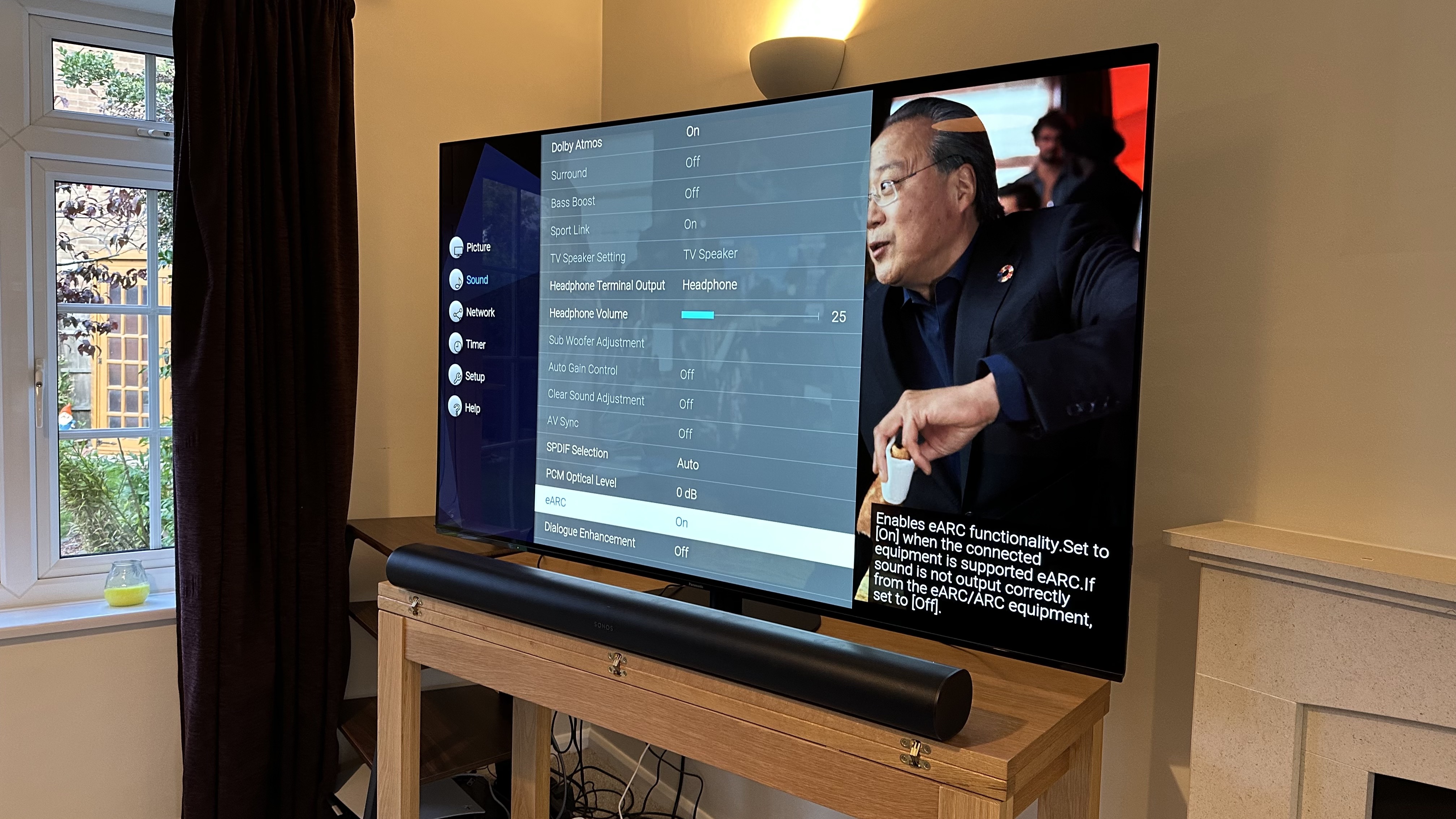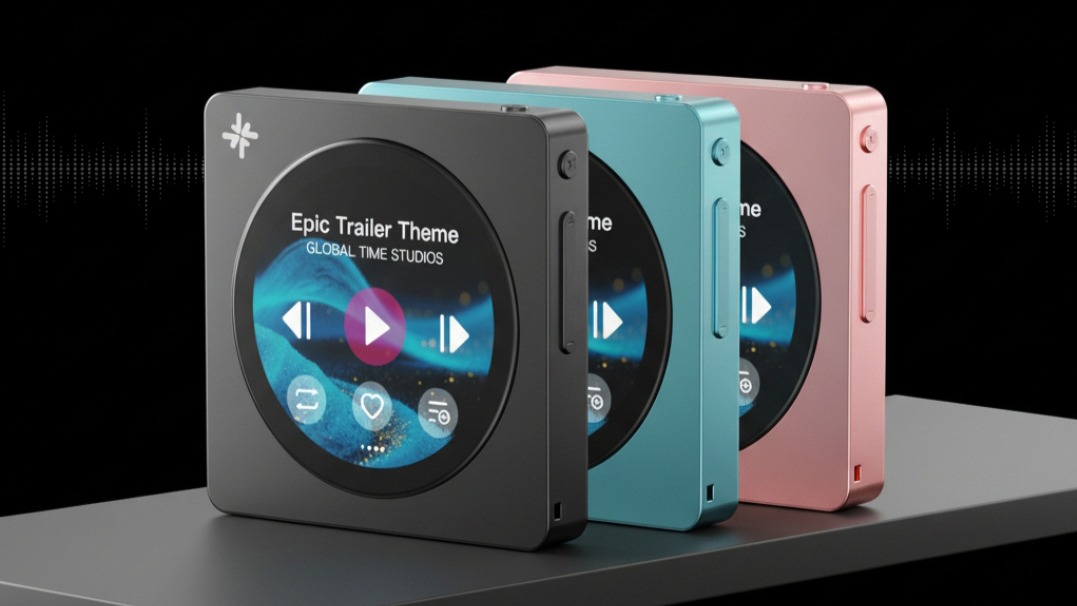Sonos Arc vs Sonos Beam (Gen 2): which Dolby Atmos soundbar is best?
Sounding out the Sonos soundbars

Connections HDMI, optical, ethernet
ARC/eARC eARC
Dolby Atmos support? Yes
Bluetooth No
The Arc is Sonos's biggest and best soundbar. Its up-firing drivers definitely make Dolby Atmos more impressive, while the rest of the soundstage is spacious and dynamic. If it's the full home cinema experience you want, look no further.
Pros
- Convincing Dolby Atmos
- Dynamic, detailed and controlled
- All of the usual Sonos smarts
Cons
- Music could be better projected
- Some rivals sound weightier
- No HDMI pass-through ports

Connections HDMI, optical, ethernet
ARC/eARC eARC
Dolby Atmos support? Yes
Bluetooth No
The Beam (Gen 2) is smaller and less powerful than the Arc, and lacks its sibling's up-firing drivers. But it still handles Dolby Atmos very well, with an expansive soundstage and plenty of features. And it's nearly half the price.
Pros
- Effective handling of Dolby Atmos
- Warm, refined sound
- Streaming smarts
Cons
- No additional HDMI ports
- Doesn’t support DTS:X
If you're serious about watching movies and TV shows, improving your TV's inbuilt sound is a must. Even the best TVs leave a lot to be desired when it comes audio quality.
The very best option is a dedicated home cinema system, but those are expensive and take up a lot of space. If that is all too much for you, your next best bet is a soundbar.
Sonos makes some of the best around, and they integrate seamlessly with the brand's other wireless speakers. That means you can build on them to create a full surround sound setup, and/or use them as part of a multi-room system that covers more of your home.
The Sonos Arc and Beam (Gen 2) are both mighty fine soundbars, earning five stars from us. Wondering what the differences are? We'll run you through them, so you can see which is right for you.
- Sonos Arc (Gen 2) preview: 5 things we want
- Sonos Beam (Gen 3) preview: 4 things we want
- 5 essential (but simple) tips to get the best out of your Sonos Arc Dolby Atmos soundbar
Sonos Arc vs Sonos Beam (Gen 2): price
The Sonos Arc arrived first, and was Sonos's first soundbar with Dolby Atmos. It's a more premium proposition, costing £799 / $799 / AU$1399 at launch but since rising to £899 / $899 / AU$1499.
The Beam (Gen 2) is much more affordable, coming in at £449 / $449 / AU$649.
Sonos kit isn't often reduced (by Sonos, at least), and even when discounts come, they are rarely large. But sales do happen – we have seen the Arc drop below £700 / $750 / AU$1400. Keep an eye out come Amazon Prime Day.
The latest hi-fi, home cinema and tech news, reviews, buying advice and deals, direct to your inbox.
** Winner: Sonos Beam Gen 2 **
Sonos Arc vs Sonos Beam (Gen 2): build

The Sonos Arc is the bigger of the two soundbars, and is designed for use with larger TVs. At 114cm (45 inches), it's a little wider than a typical 50-inch TV and sits best with a 55-inch TV.
Like the Beam (Gen 2), it can be wall-mounted (though the bracket costs extra), and features a perforated polycarbonate grille covering the speakers. The Arc features four status lights above the Sonos logo that shine through the grille. By default, these LEDs remain off most of the time and their brightness is tailored to the ambient light in the room even when they are lit (when adjusting volume, for example), so as not to appear too bright. Sometimes, it's the little things that make all the difference.
Another LED next to the microphone button shows whether the Arc is listening out for voice commands for Alexa or Google Assistant – another feature that is shared by the Beam (Gen 2).
Both soundbars feel well made and have a very similar look. Which will suit you best really depends on the size of your room and your TV.
** Winner: Draw **
Sonos Arc vs Sonos Beam (Gen 2): features

Each soundbar has a single HDMI eARC port, an optical adapter, ethernet and power socket. Neither has HDMI inputs for your sources – the idea is that everything is connected to your TV, which then outputs sound to the 'bar.
Dolby Atmos is the flagship feature common to both, but crucially the Beam (Gen 2) lacks up-firing drivers, which impacts the sound. The Arc has more speakers overall – 11 Class D digital amplifiers power 11 custom drivers. Eight of those drivers are elliptical woofers evolved from those in the original Beam (four along the front, two on top and one in each end), while the other three are silk-domed tweeters that are all built into the front but with two firing diagonally into the room.
The Beam (Gen 2) has four front-facing elliptical mid-woofers and an improved centre tweeter for dialogue. The drivers are powered by five Class D amplifiers, while three passive radiators provide low-end frequency reinforcement.
Both offer Trueplay to calibrate the sound to your room, and both work with the Sonos app to fine-tune the audio, should you wish. This is also where you can activate modes such as Speech Enhancement to clarify dialogue and Night Sound to minimise the low end and not disturb the neighbours/wake the kids during late-night movies.
Both offer Apple AirPlay 2 for sending audio from an iOS device, plus Spotify Connect and Tidal Connect, but lack Bluetooth for more general wireless connectivity. They can both turn on and switch to TV audio when you power on your television too, thanks to the HDMI-CEC feature.
The Arc also work with Sonos' recently launched Ace wireless headphones. The TV Audio Swap feature lets you switch the audio from the soundbar to your headphones and back, with one button press. We found it to be effective, if a little hit and miss (hopefully that'll be fixed with a firmware update). The feature will come to the Beam (Gen 2) at some point, but there's no word when.
Their feature sets are very similar, but the Arc's extra speakers – and compatibility with the Ace – tip this round in its favour.
** Winner: Sonos Arc **
Sonos Arc vs Sonos Beam (Gen 2): sound

So what do the Arc's up-firing speakers add to the listening (and hence viewing) experience?
A lot. In fact, "it's one of the most convincing Atmos presentations of any soundbar we have heard," we noted in our review. Some soundbars just add height, but Sonos has taken the care to add precision to the height channels so that they are able to fill the room and place specific sounds in specific places.
The details add much to the performance, but the Arc is dynamically deft too, and it’s this combination of qualities that makes its sound so evocative. Each part of the plane sounds different – areas open to the elements are airy and cacophonous, while others are more enclosed and keep outside noise more muffled.
Bigger dynamic shifts don't pose a problem either, with sonic contrasts handled elegantly. Dialogue is so clear you won't need the Speech Enhancement feature, and bass performance supremely well judged – even in the depths, the lower frequencies never overwhelm. The treble is clean and sparkly too, without veering into harsh brightness.
Its tonal evenness helps make the Arc a more musical performer than most soundbars. Its spatial and rhythmic organisation can handle even the most challenging arrangements, with each instrument given space to breathe.
Switching to the Beam (Gen 2), the difference is notable. Genuine overhead sounds such as planes and helicopters prove a stretch too far, but it still handles Dolby Atmos better than any similarly priced soundbar. It gives tangible motion, depth and space to the audio, which certainly makes movies more immersive. It's not as impressive as witnessing the Arc's tricks, but the soundstage is certainly expansive. While dwarfed by bigger TVs, it's still able to make 55- and 65-inchers sound more cinematic.
There is remarkable consistency across the soundfield, and expert rendering of space and dynamics. And despite the lack of upward drivers, there's a remarkably real sense of height.
Its projection is no match for the Arc's, but at this price, we wouldn't expect it to be. The same can be said of its ability to handle music tracks.
** Winner: Sonos Arc **
Sonos Arc vs Sonos Beam (Gen 2): verdict
The Beam (Gen 2) is less impressive sonically, but that's to be expected considering it's just over half the price of the Arc. If you have a bigger TV and your cinematic taste leans towards blockbusters with lots of overhead audio action, the Arc will be the wiser investment. But if that's too expensive, the Beam (Gen 2) will serve you well, even if your TV is 65 inches in size.
MORE:
Best soundbars: the best TV speakers you can buy
And best Dolby Atmos soundbars
Sonos Beam Gen 2 vs Sonos Beam Gen 1: which is better?
Joe has been writing about tech for 20 years, first on staff at T3 magazine, then in a freelance capacity for Stuff, The Sunday Times Travel Magazine (now defunct), Men's Health, GQ, The Mirror, Trusted Reviews, TechRadar and many more. His specialities include all things mobile, headphones and speakers that he can't justifying spending money on.

